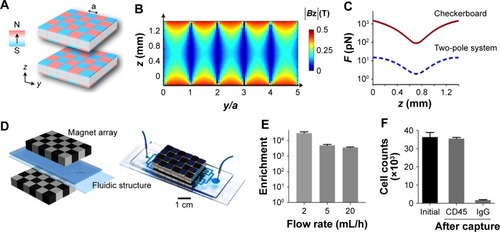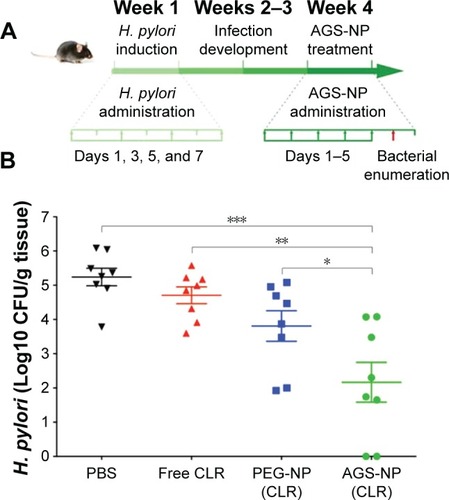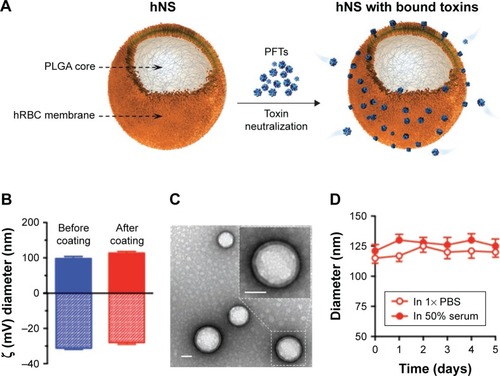Figures & data
Table 1 WHO listing (third revision, 2012)Citation16 of critically important antimicrobials for human medicine
Figure 1 Checkerboard magnetic chip for cell capture.

Figure 2 NP-coating attenuates Helicobacter pylori (H. pylori) pathobiology. Gastric cancer cells were infected with NP -H. pyloriGFP complexes estimated to maximally cover approximately 25% (Si30–25%: 1 × 108 bacteria, 600 µg mL−1 Si30; 10 min PBS) or 0.25% (Si30–0.25%: 1 × 108 bacteria, 60 µg mL−1 Si30, 10 min PBS) of the bacterial surface, respectively.
Abbreviations: Ctrl, control; NP, nanoparticle.

Figure 3 In vivo anti-Helicobacter pylori therapeutic efficacy of AGS-NP (CLR).
Abbreviations: CFU, colony-forming unit; CLR, clarithromycin; NP, nanoparticle.

Table 2 Targeted antibacterial therapies
Figure 4 Structure of hNS.
Abbreviations: hNS, human RBC nanosponge; PFTs, pore-forming toxins; PLGA, poly (lactide-co-glycolide); RBC, red blood cell.

Figure 5 CFU assay.
Abbreviations: CFU, colony-forming unit; CSNP, chitosan nanoparticles; E. coli, Escherichia coli; KP, Klebsiella pneumoniae; MRSA, methicillin-resistant Staphylococcus aureus; NAB, nano-antibiotic; Pseudo, Pseudomonas aeruginosa.

